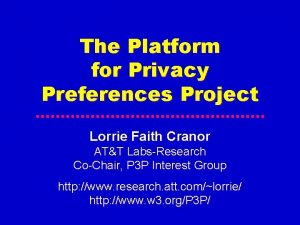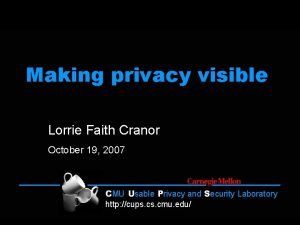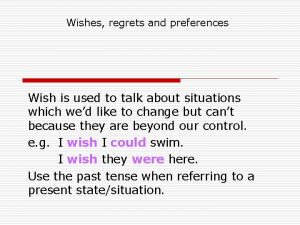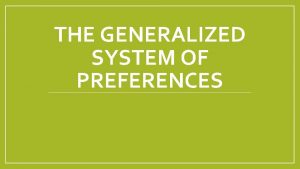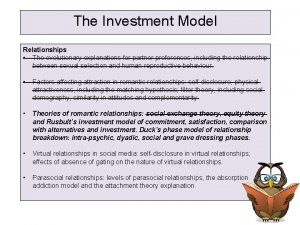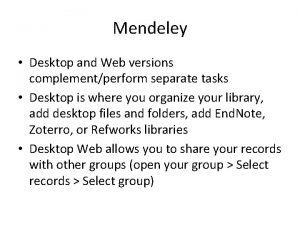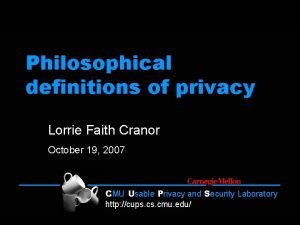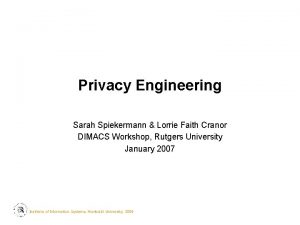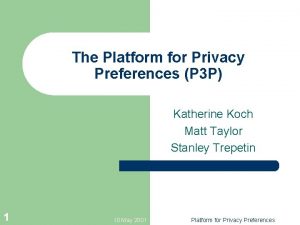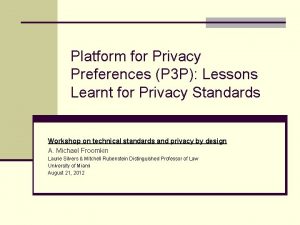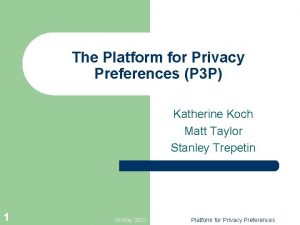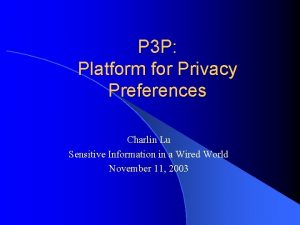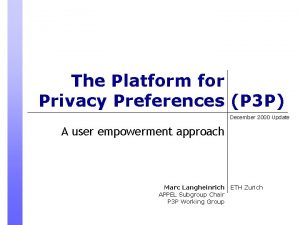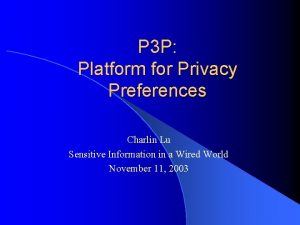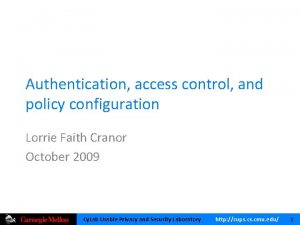The Platform for Privacy Preferences Project Lorrie Faith














- Slides: 14

The Platform for Privacy Preferences Project Lorrie Faith Cranor AT&T Labs-Research Co-Chair, P 3 P Interest Group http: //www. research. att. com/~lorrie/ http: //www. w 3. org/P 3 P/

Empowerment Tools n Prevent your actions from being linked to you Crowds - AT&T Labs n Allow you to develop persistent relationships not linked to each other or you Lucent Personal Web Assistant - Bell Labs n Make informed choices about how your information will be used Platform for Privacy Preferences Project - W 3 C n Know that assurances about information practices are trust worthy TRUSTe - Electronic Frontier Foundation and Commerce. Net 2

Platform for Privacy Preferences Project (P 3 P) A framework for automated privacy discussions under development by W 3 C l Services communicate about practices l Users exercise preferences over those practices l User agent can facilitate automated decision making, prompt user, exchange data, etc. 3

Basic P 3 P Concepts proposal user agent service agreement user data repository preferences data practices 4

A Simple P 3 P Conversation service user agent User agent: Get index. html Service: Here is my P 3 P proposal - I collect click-stream data and computer information for web site and system administration and customization of site User agent: OK, I accept your proposal Service: Here is index. html 5

More Complicated Conversations n Service offers choice of proposals n User agent makes counter proposal n User agent rejects proposal and asks service for another offer n Upon agreement, user agent automatically sends requested data n No agreement is reached 6

Where we are and where we’re going. . . n Overall architecture n Proposal grammar October 1997 n Harmonized vocabulary n Protocol structure March 1998 n Syntax (encoded in RDF or XML) May 1998? n Implementation guide n Preference interchange language 7

P 3 P Grammar n Experience space n Qualified data set n Service provider’s identity l data set/element l data category n URL for privacy policy n Consequence n Purpose n Qualifiers n Required 8

P 3 P Vocabulary n Purpose n Data category n Qualifiers l identifiable use l recipients (domain of use) l general disclosures «access to identifiable information «assurance (accountability) «other disclosures • change agreement • retention 9

Data Categories n Physical contact information n Navigation and click-stream data n Online contact information n Transaction data n Unique identifiers n Financial account identifiers n Computer information n Demographic and socio-economic data n Preference data n Content 10

Purposes n Completion and support of current activity n Web site and system administration n Customization of site to individuals n Research and development n Contacting visitors for marketing of services or products n Other uses 11

Implementation Guide n Guiding principles n Guidelines for user agent implementers n Guidelines for service providers n Guidelines for server implementers n Guidelines for creators of recommended settings n Guidelines for users 12

Guiding Principles n Information Privacy n Notice n Choice and Control n Fairness and Integrity n Security 13

Keys to Success n Good end-user implementations l easy to use «easy to plug in “recommended settings” «not annoying l use incremental adoption model l privacy friendly n Good server implementations and tools n Adoption by many Web sites n Users find it useful n Endorsement by governmentregulatory and selfregulatory organizations 14
 Platform for privacy preferences project
Platform for privacy preferences project Lorrie faith cranor
Lorrie faith cranor Cvs privacy awareness training answers
Cvs privacy awareness training answers Lorrie jackson
Lorrie jackson Dead faith vs living faith
Dead faith vs living faith Activity on arrow diagram
Activity on arrow diagram Wishes in past
Wishes in past Viewing television is a wasteful activity claim of policy
Viewing television is a wasteful activity claim of policy Elders' housing preferences reflect a strong desire for
Elders' housing preferences reflect a strong desire for Generalised system of preferences wto
Generalised system of preferences wto Career choices and preferences in hrm
Career choices and preferences in hrm Tisc preferences
Tisc preferences Rusbult's investment model
Rusbult's investment model Well-behaved preferences examples
Well-behaved preferences examples Mendeley desktop preferences
Mendeley desktop preferences
